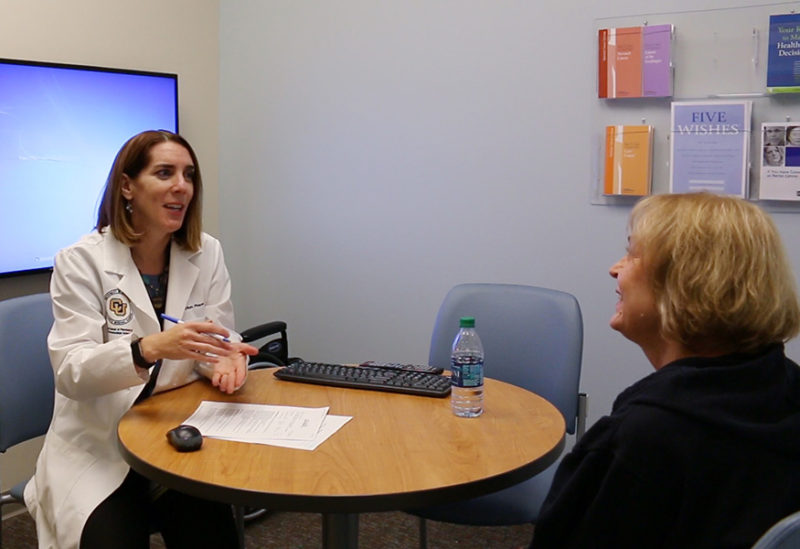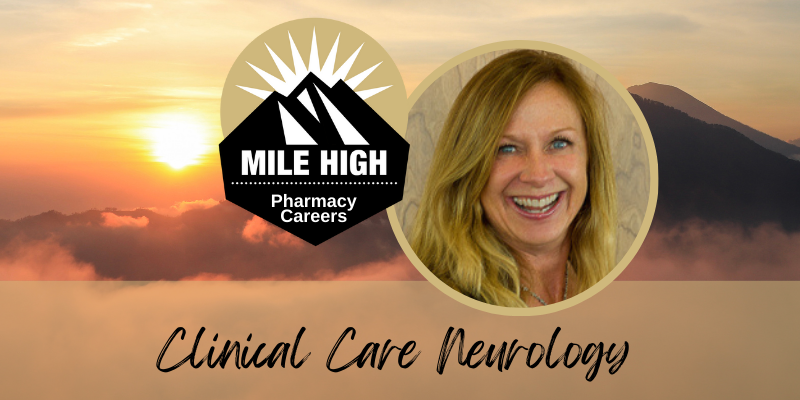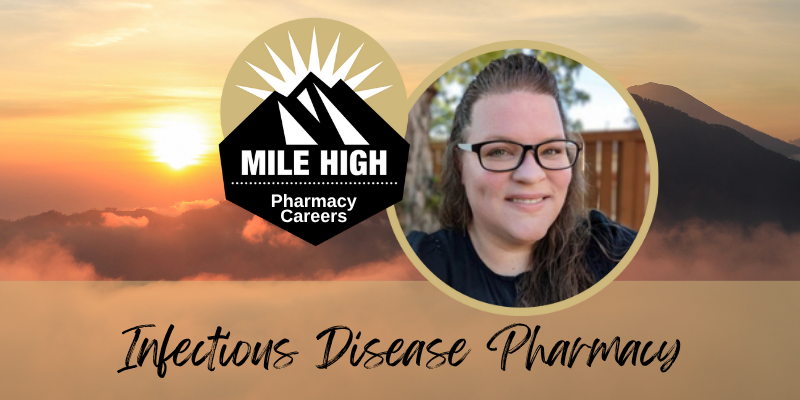Oncology pharmacists are in high demand. By 2020 cancer patient visits will increase by 48% with only a 14% increase in oncologists, according to the American Association of Medical Colleges Center for Workforce Studies. Oncology pharmacists can help offset this projected shortfall in patient visits. Pharmacists from The University of Colorado Skaggs School of Pharmacy are currently working as an integral part of the cancer team at The University of Colorado Cancer Center at UCHealth, “This isn’t just somebody who’s dispensing drugs in a pharmacy; this is somebody who is embedded in our clinic,” explains Director of the UCHealth Thoracic Oncology Program, Ross Camidge, MD. “In an ideal world, what we’d really like is one per clinic, on every day of the clinic. We need more pharmacists,” Camidge adds.
According to UCHealth, clinics with a pharmacist include the Bone Marrow Transplant Clinic, with two full-time clinic pharmacists, Jenni Tobin, PharmD, and Stephanie Chase, PharmD; the Gynecologic and Urologic Cancer Clinics, which split clinic pharmacist Sarah Weisdack, PharmD; and the Gastrointestinal Cancer and Phase 1 Clinical Trial Clinics split two part-time pharmacists, who are also professors at CU Pharmacy, Cindy O’Bryant, PharmD, BCOP and Ashley Glode, PharmD, BCOP.
Putting pharmacists in the cancer clinics started when O’Bryant, who manages the post-graduate year two oncology residency program, joined CU Pharmacy in 2000 and was tasked with developing an outpatient clinical oncology pharmacy program, “Through my time here, I’ve been able to integrate myself with our Phase 1/GI team, and through that, been able to really model what pharmacy can do to help enhance the care of patients,” says O’Bryant. As people began seeing the value of having a pharmacist within the clinic, demand started growing, “The physicians who don’t have pharmacists embedded in their clinics really do want them and are looking for ways to get them because they see the advantage of having those pharmacists and the level of care that we can provide” she adds.
The job of an oncology pharmacist is to educate both the patient and the physicians on medications, interactions and side effects. “A lot of times our physicians really rely on us to do the one-on-one patient education. So, they’ll make a treatment plan and then they want us to thoroughly explain it, talk about side effects, the schedule, what the patient can expect, what to call for, what’s okay to manage at home,” says Glode. “I talk a lot about just being there to support the patients. That’s really the most rewarding part of my day,” Glode adds.
In addition to educating patients and physicians, an oncology pharmacist also helps get access to treatments, “More and more, I prescribe a drug, and these hurdles have to be cleared in terms of what their insurance needs to do, whether it needs pre-authorizations, and having somebody who makes that their responsibility is just incredible,” says Camidge.
“We have literally new drugs approved almost every week; at least once a month, there’s a new drug approved, so it’s constantly moving. Being on the cutting edge of that and seeing those drugs come through the Phase 1 process and moving on through drug development and being FDA approved is really quite fascinating, and it helps me be able to identify how we can better help patients,” adds O’Bryant.
The pharmacists in the Cancer Center are part of a multidisciplinary team. It’s that team approach that gives patients the best possible care they could receive, “I think I have a really great opportunity to make a difference in a patient’s life,” says Glode. “Every day is different. I get to be challenged by questions patients ask me or new therapies that come out, so it’s definitely an exciting career,” she adds.
Become an oncology pharmacist through our PharmD program and work side-by-side with physicians, nurses and pharmacists to provide the best care to cancer patients.
[embed]https://www.youtube.com/watch?v=UmEGQdcLYn4[/embed]


.png)
